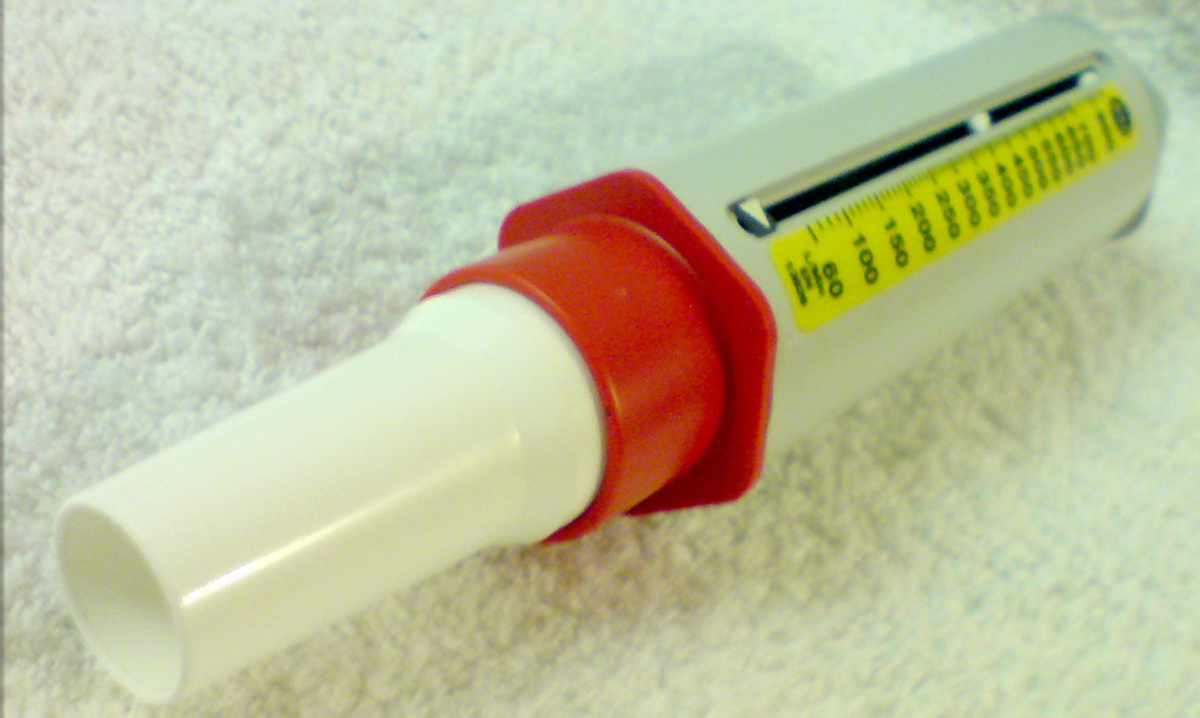Table of Contents
Monitoring Symptoms
For people who have been diagnosed with persistent asthma, it is essential to monitor symptoms and start treatment early. If symptoms are allowed to continue, they can be difficult to reverse, and a life-threatening asthma attack can develop.

The small, handheld device is used to measure how much air you can blow out. This measurement is known as your peak flow rate.
Asthma symptoms can sometimes increase gradually. Measuring how much air you can blow out of your lungs is one way to determine if your asthma is getting worse before symptoms become noticeable.
The first step in using a peak flow meter is determining your baseline. Your baseline is how much air you can normally blow out. You can obtain your baseline, by measuring your peak flow rate every day for a week when you are not having symptoms.
Take a deep breath in and put the mouthpiece of the peak flow meter into your mouth and forcefully blow out. The tube-like device has a number scale on the front of it. After you blow into the device, the maker will move on the numbered scale to indicate the amount of air you blew out. Take note of where the maker is and repeat a second time. Take the better of the two measurements.
Write down your peak flow measurement each day. After about a week, you should be able to determine what your personal best is. Consider using the device each day to determine if you are forcing out less air than your normal levels. For example, if you blow out only about 50 percent of what is normal for you, it is probably time to use your fast-acting inhaler. Be sure to speak to your doctor about your peak flow rates including how to interpret your results and when to take medications.
Understand Asthma Medications
The combination of both factors makes getting air in and out of the lungs difficult. In addition, excess mucus may be produced, which makes symptoms worse. Both inflammation and narrowing or constriction of the airways needs to be treated to reduce symptoms.
There are different classes of medication, which may be prescribed to treat persistent asthma. For instance, bronchodilators will be prescribed to treat sudden symptoms, such as wheezing or chest tightness. The medication may be taken through a nebulizer or a metered dose inhaler. Regardless of the method of administration, bronchodilators work by relaxing the muscles of the airways. As the muscles relax, they open up or dilate the airways, which makes breathing easier. This class of medication is considered fast-acting and can be taken as soon as symptoms start.
See Also: Asthmatic triggers
Corticosteroids can also be used to treat persistent asthma. This type of medication should not be confused with steroids, which some bodybuilders take to increase muscle size. The chemical structure and dose is not the same. Corticosteroids treat persistent asthma by decreasing inflammation in the lungs. The medication is not taken as a fast-acting treatment for sudden symptoms. Instead, it is used as a preventative treatment. Corticosteroids may be prescribed for people with persistent asthma to be used every day to prevent inflammation from developing.
- Gardenhire, Douglas S. EdD(C) RRT. Rau’s Respiratory Care Pharmacology. Mosby 2011
- Farzan, Sattar, MD, FACP, FCCP A Concise Handbook of Respiratory Diseases. Prentice Hall 1997
- Photo courtesy of Alan Levine by Flickr : www.flickr.com/photos/cogdog/14716567729
- Photo courtesy of Tomhannen by Wikimedia Commons : en.wikipedia.org/wiki/Peak_expiratory_flow#mediaviewer/File:Peak_flow_meter_horiz.jpg
- www.ucdmc.ucdavis.edu/welcome/features/2012-2013/07/20120718_asthma_control.html
- www.healthychildren.org/English/health-issues/conditions/allergies-asthma/Pages/Mild-Moderate-Severe-Asthma-What-Do-Grades-Mean.aspx
- www.lung.org/lung-disease/asthma/living-with-asthma/take-control-of-your-asthma/measuring-your-peak-flow-rate.html


Your thoughts on this